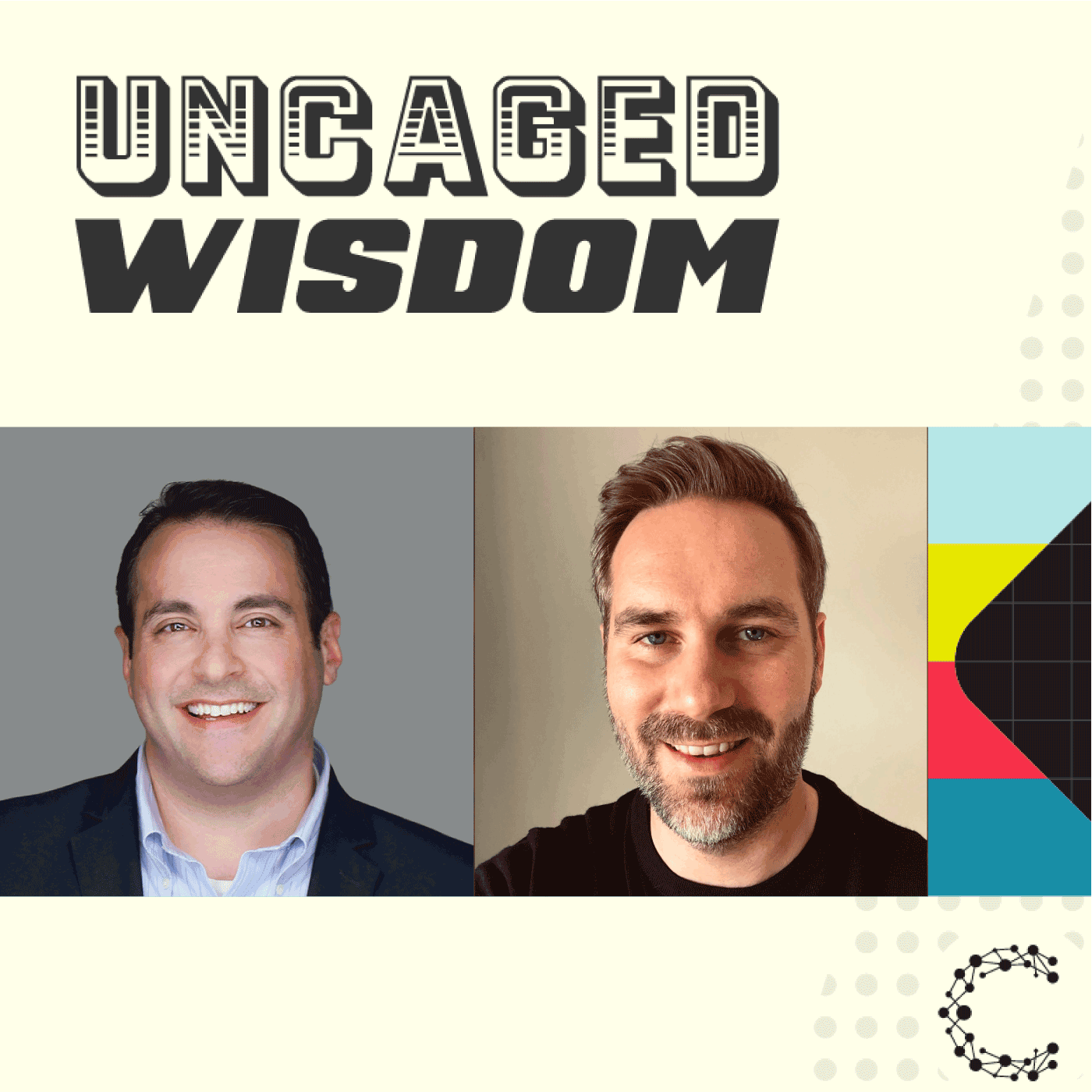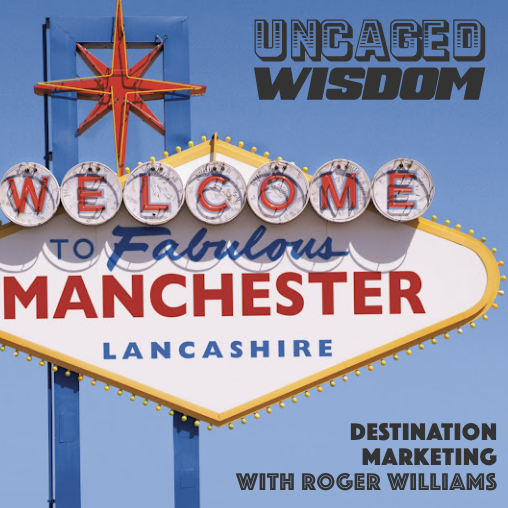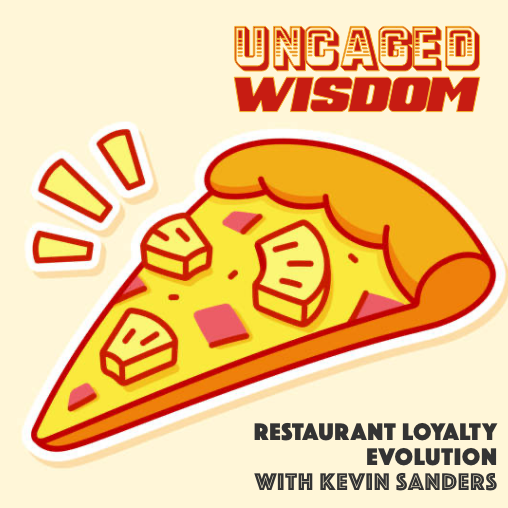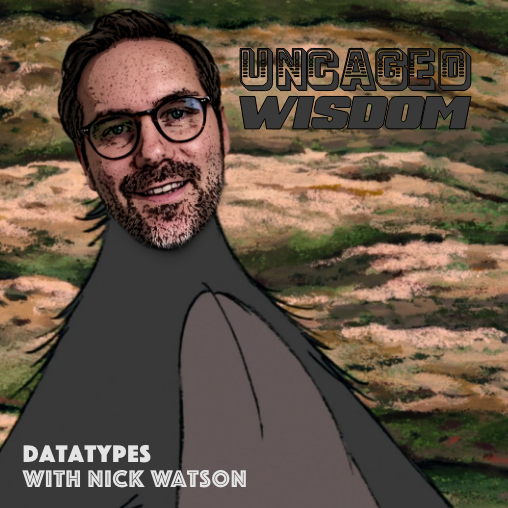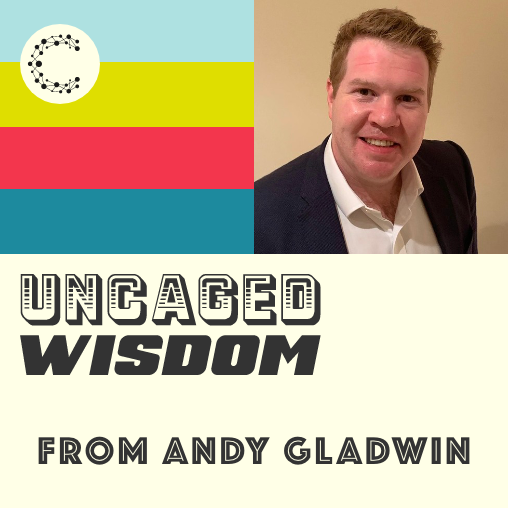The Benefits of Incorporating Interactive Digital Experiences into your Cross-Channel Messaging w/ David Evans & Nick Watson
- 0.5
- 1
- 1.25
- 1.5
- 1.75
- 2
Julian: Welcome back, everyone. In this week's star- studded episode of Uncaged Wisdom, we are joined by David Evans, SVP, global solutions messaging, and Nick Watson, SVP, global solutions experiences at Cheetah Digital. Nick and David will be joining Kayla and myself to discuss why the addition of interactive digital experiences can greatly enhance a brand's cross- channel communication strategy. To help set the scene, a quick reminder of how brand marketers are typically approaching email and cross- channel messaging today. Perhaps note some of the habits we've fallen into with regards to content and cadence.
David: Yeah. So what I've seen is this evolution of consistency, and marketers have all followed the same process for building out the smart marketing or cross- channel marketing stack. And their focus is on making sure that they communicate with their customers in multiple ways in the appropriate cadence. So what this means is a combination of different tactics, whether it's daily promos, so marketers often have the Monday mail, the Thursday mail. They combine that with triggers or real- time triggers based off of things like purchases or activities online. Marketers use journeys to manage more complicated flows of communications from one to the other, and then they try and orchestrate this against each other. And I think over the last five to 10 years, marketers have gotten really good at building that stack. There's always room to grow or to improve it. But that process is the bar that everyone's trying to get to.
Julian: With this, the reason we got our wonderful heads together today is to talk about how can we do things beyond that? What can we inject into that process to make things a bit more interactive and two- way, and actually learn a bit more about the people you're talking to? And Nick, before we get into where we put what we refer to as experiences, what are experiences and how do we best define them? Because you and me have been doing this for years, and although we've got quite a good picture in our head, it's tricky. And if it's tricky for us, it's tricky for everyone. So how would you define an experience, inaudible experience, or just generally, an online experience with just doing a similar job?
Nick: Obviously, digital experience is in a great big holistic entity. In our world, what we mean is some sort of moment of direct digital interaction with a prospect or a customer. And they can, at that point, provide some data about themselves and their preferences. And typically, that's in exchange for some sort of value. These participator interactions are not observed. They're not like seeing someone's browsing history and then collecting data on that. The prospect or the customer who's interacting is actively passing that data. They're giving up that data willingly and intentionally. And this can take the form of a simple poll. Do you like this or do you like that? Or it could be some full multi- stage, user- generated content contest with voting by the public on the best entries. And so, these experiences can live in any channel, they can be any size and scale. It could be on web, in an app, in an ad unit of a social story, but the whole intention is to collect data and for the participant to willingly and actively give up that data.
Julian: The forms, the things that people can click on, can fill out, there's a purpose behind them, something else to do and say actually to enjoy, like a category quiz or trivia quiz, or image generator. And sometimes it's more of the classic value exchange of information in return for a chance to win. The theme through the next point will be, if you're not using experiences or you haven't considered them as part of your broader messaging and marketing, your map.
David: What's interesting is in that kind of process I described, I think what we've seen is marketers get stuck in this rut of managing the thing or the beast that they've created. It takes a lot of resource and a lot of time to just keep that program of multiple touch points of running on a day- to- day basis. And it almost creates a stagnancy trap, but I think what's interesting is, as a result, there's a complete lack of innovation in their digital marketing program. So when I think about experiences and how that comes into play, I don't think about it as a single new solution or product. I think it's a collection of ways that we can inject new ideas into a marketing program. We joked, insanity is doing the same thing over and over again and expecting different results. And that's what ultimately happens with marketers, that we repeat the same communication stream or process with our customers on a daily, weekly or monthly basis, and assume that the numbers are going to go up, and they're not. So what experiences does is gives us new ways to inject life in that program. And I think about it in four different ways. The first we always talk about is acquisition. And a marketer's job is to grow revenue through their marketing programs, but if they're not getting new people in that program, you have a limited ability to actually grow it. So we see experiences as a great tool for growing your email list. So whether that experience is attached to display ads, social ads on websites or in other channels, that tool allows us to get more eyes and email addresses into an email marketing program. And then that marketing program can nurture them and grow that relationship. So the second value I see experience as adding is this idea of permission. And obviously, consent is a really important element now in the digital marketing program, as we see more and more privacy laws taking effect. But plain and simply, over a period of time, your customers often forget what they've opted into or don't necessarily know that you've got more ways to communicate. So not just acquiring customers, an experience can actually help you grow your relationship with them. So you can use an email channel or an experience to actually drive them to download a mobile app or to sign up for SMS, to reconfirm consent for an email program that they potentially stopped participating in a while ago. A lot of ISPs will start flagging your emails as spam if customers aren't opening. So it's possible you could use an experience to really reconfirm their interest in your program. Permission is key, and this is another mechanism which we can engage a customer to vet how much they care about your program. Another one that I really like is enrichment or data enrichment. And I've worked in a space where enrichment with third- party datasets has been big, but third- party data sets are becoming less and less valuable, and obviously have privacy risks with those. Experiences is an interesting way to collect better zero to first party data. You always think about a consumer's experience. So you sign up at a brand's website, you fill out your preference center, and then you start getting communications from them. I'd ask any consumer, how often do you go back and update that preference center? Maybe when you move and you've got to change your address. But what ends up happening is your declared preferences could be one, two, three years old. And those are preferences that a marketer is using to target you. I look at experience as a way to enrich that data consistently with fresh points. It could be about preferences. It could be interests, it could be something fun, but they're all data points that a marketer could be using. They're way more relevant than something they filled out one, two or three years ago. The final thing that I see as being interesting and relevant is just enjoyment or engagement. We talked about that consistent cadence of a marketing program. Monday, you get your promo email. Wednesday, you get some triggers. Thursday, you get the next touch point in your journey. That creates email fatigue. And what you'll see is consumers stop opening emails when they get bored by them. I love the idea that you can switch up a specific email at any point and instead of throwing in the weekly newsletter, throw in an experience. Engage them with a fun activity, a quiz or a game. Get them to participate. They're potentially giving you more data along the way, but it throws a new method into an email marketing process that gets them to engage in a way they haven't before. You've got to mix up that flow to keep people on their toes and hoping for something more exciting to come through. So those are four ways I see experiences being really helpful for marketers.
Julian: Fantastic. Dave's outlined a really great four- step process of where experiences and these interactive pieces can enhance the lifecycle and the flow. So what could you add to the different sections, and maybe I can help add some examples as well, but if we go back to acquisition-
Nick: Acquisition is an interesting one, because as an email marketer or an owner of the CRM team, you might not actually own or are responsible for some of the best acquisition channels. And I think it's about your work with those other teams, be it a media team, a social team, to activate them and give them the tools to start acquiring data for you. And that's absolutely critical. So it's a piece of work that if you're not already doing, please definitely do that, because there are so many channels with which you could be acquiring data and perhaps you're not. And perfect case in point here is if your social team are running loads of social stories and you've got incredible engagement on your social channels, take that social story, provide really mobile first, super lightweight, quick, engaging data capture experience as the next best action and provide that to those teams. The net result for them will be greater engagement in those social stories. And for you, the net result will be some data and some hopefully opted in, newly acquired leads into your database. That's really critical to do that. And also looking out across what's happening in other teams or functions and checking that there aren't those data capture experiences happening somewhere. The data is being acquired somewhere, but it's not reaching you and it's not reaching your database. Perhaps an agency spun up a data capture sweepstake or something, and actually you haven't seen the data from it. And we always say that the more that you can plug in that acquisition tool and that data flowing directly into your CRM or database or CDP is really critical, because that means that that data is flowing directly to you and for you to start being able to take some action with and develop a relationship with. So acquisition's key, and sometimes it's the hardest, because it might not be only solely in your control as an owner of email marketing or cross- channel marketing or a CRM team.
Julian: With acquisition as well, we know that these things work. If there is a clear purpose for people to interact with a brand, they will have a clear value exchange upfront or a reason for someone to get involved, be it a sweepstake, be it giveaway, be it a bit of information, a product selector, and they are willing to do it because it is all done openly.
Nick: Definitely. The idea of these mechanics is that they are engaging and they are fun and they are creatively led. So it's all about the hook and the idea, but at that moment that you have captured the consumer or prospect's attention, then ask them for that data, and as you say, offer them that value exchange. And there is nothing wrong from an acquisition standpoint of acquiring data through the use of incentives like price draws or instant wins. That's absolutely a great way to get started. And we always say, make that value exchange something relevant and make sure that that's something that is relevant to consumers of your brand already, or the people who would be interested in your brand. So I always say, don't go and give away an iPad if you're a sock company, because what's the relevance? Someone just wants to win an iPad. Give them something like a year supply of socks. And they'll sign up, ideally, to receive more information and you know they love your sock. And it's that relevance about the value exchange that's critical. And then it feels like it's not creepy that people are doing and participating in that, and doing that moment of interaction because they want to and because they are already showing an interest in your brand. From there, then it develops into these other pillars of deepening your relationship and getting more data from that consumer, and ideally moving towards understanding how loyal they are to you as a customer.
Julian: Serious socks appeal there, Nick. Very good. When Dave was taking us through these four points, permission was something that, it's actually, it's quite obvious and it's a really powerful element of this, but I didn't really think about it until, frankly, Dave was going through and explaining how experiences really help the marketer, especially with email, keep them coming back in a way that they feel comfortable. Have you thought about this a little bit more, about how we pair so nicely with messaging and email here, where they're basically opting in again on a regular basis in a different way that's just a tick box?
Nick: The idea is that by their moment of interaction and by the very fact that this isn't just some simple sign up for our newsletter option, that's sitting quite passively on a website somewhere, that they will be more incentivized, if you will, to sign up and receive continual communications, because it might be, Hey, take part in more of these. Find out when our next offer or competition or sweepstake is, and using the right language and the right hooks, therefore, to get them to want to opt in and to want to participate. And one other thing that I think is really interesting is, from a cross- channel perspective, is the idea of the use of other channels, maybe like mobile, for example. So taking the opportunity to maybe drive an SMS to someone when you've got their phone number and asking them to partake in some sort of experience with an incentive behind it, whether that's some additional money off or whatever it might be, to come and actually then provide some more detail like email address and opt- in to start some marketing communications there as well.
David: I think the challenge with email engagement is that if your customers aren't actually reading your emails, they're not going to know there's something fun and new in it, unless they're brilliant subject line writers. So when it comes to using experiences to reconfirm interest, you have to start thinking about other channels. So what we can do and what's exciting is that you can take that same email audience you have in the EDP and re- target them elsewhere. So if you see a large group of customers who just aren't participating in email, we can re- target them on social networks or on Google, ask them if they want to participate in the survey, make it fun and exciting and use experiences to do that. But part of that survey, again, can be a recommitment to the email program or potentially an opportunity to change their delivery preferences. So I think that's really where the power of data comes into play. If they're not participating, you might not have lost them, but you're not going to re- engage them in the channel they're not reading. It's leveraging that data and taking it elsewhere to see if you can bring them back.
Kayla: In a past life, I worked for a large retailer and helped manage the loyalty strategy there. And one of the biggest hurdles that we were consistently met with from an executive level was, you don't need to worry about acquiring new people into your program. You just need to be focused on getting the people in your program to purchase more. I'm curious to hear if you guys hear that a lot as well and what your response is in those situations.
David: I think they're right in that it's easier to bring in revenue from your existing customer base and to grow those relationships than it is to bring in new people and turn them into loyal customers. The cost of acquisition and the value of those people will be smaller. It also doesn't mean you shouldn't be thinking about growing that pipeline as well. So I wouldn't necessarily agree there, but that's the value of a good messaging engagement and loyalty program. It's using the data you have to create meaningful interactions that hopefully incentivize them to participate with your brand through a purchase. You should be learning from that behavior, using it to predict where they're going to be next, and getting ahead of that and continuing that cycle. And that's where the power of data and messaging and engaging experiences and loyalty tie together well. You always want to nurture those relationships.
Nick: I couldn't agree more. There's no question about those loyal customers. The more you understand more about them, the better, and the option to at any time communicate with them in the right channels at the right time in the right place is super powerful. But definitely don't switch off the idea of acquisition. The issue perhaps before was the fact that that cost of acquisition was high and the tools weren't there to allow brands to do that at scale, and they had to kind of choose one or the other. And I think the point is that with the right tools in play, you can now do this effectively at scale, without being a burden of the cost of implementing these programs to drive net new acquisition. So, as I spoke about before, having that ability to have more data capture experiences as part of your digital advertising or in social channels that can be always on. You've always got those running, they're helping you to drive acquisition. And then obviously, deepening that relationship once you've got them and you're kind of moving them through that the life cycle to start to understand more and more about them, and ideally, create them into loyal customers or start to identify the fact that they've always been loyal customers, but you just didn't know that before. Don't turn off the tap on acquisition. It's easier now than it ever was to drive acquisition at the same time as deepening that relationship with your consumers too.
Julian: Very nice segue into Richmond. And you mentioned collecting useful data at scale.
Nick: The idea of the experiences product is to put the power in the hands of, as we term it, the non- technical marketer. But they can be technical too, but they just don't need to have to implement coding skills and techniques in order to bring an experience to life, to develop a good looking landing page with some sort of data capture mechanic within it. We have the concept of themes, and so you have the ability at the beginning of the process, creating a brand theme that matches your digital brand guidelines, and then every experience that you create out of the box will be on brand. And that provides some really good opportunities to put the power in the hands of actually a CRM team who perhaps wouldn't have been able to create these before, but now they can, because those experiences can be created by just adding in the content blocks that you want, adding your copy, your images, and firing up that particular experience and publishing that into your landing page or on your website, or publishing into your app or passing it to the team to add into a social story. And so, that's super powerful. And that can mean that you have the ability to run more and more of these types of data capture experiences than you ever did, because genuinely, you can create one in 30 minutes to an hour, whereas before you might've been briefing multiple different teams or agencies in order to create that very same experience.
Julian: It wouldn't take much of a little bit of education or a little bit of a explanation, how these different types of experiences can live as part of the existing emails. They don't need to rip up their current talk track or their messaging track. They could add, though, inaudible within existing communications that take them to this extra thing, if someone's interested. And of course, you'll soon find out if they're interested. It's not necessarily about completely changing the entire world. It's changing things up to get more from the effort that you're doing.
David: Yeah. I would agree, and it's all about real estate. You've got this blank canvas to put content in. And when I talk about email fatigue, the same layout can bore people. So it's a good opportunity to drop an experience link in in different places. Or imagine an order confirmation, which is not necessarily considered a promotional email. You could use that and ask a survey question at the end, that takes them to an experience. Two different, easy ways to inject it into that workflow, better experiences for them to view, but also like an operational email, they're more likely to open it. So there's a better chance that they'll see it and see that experience and follow through.
Nick: What we haven't spoken about yet is this concept of preference data, psychographic data, zero party data, and the maturity model that we always discuss. And the reason that this is critical at this stage is that having an understanding of the additional sets of data that you want to understand about your customers and what impact that could have, whether that's on your subsequent marketing efforts, or to better segment for other types of communication, or into understanding what products you should develop, for example, as well. This is a really critical part here, that you go through the process of acquisition and at that stage, you might just want to know a couple of extra, really important things. But as you get deeper into your relationship, the more that you understand what data is important to you as a brand to know about your consumers and the power that it can provide on an ongoing basis. And that might be really tied very closely to what revenue you can derive from that data that you've acquired. If you know more about your consumer and about some type of specific preference that they have, whether it's actually, if you're a sportswear brand, what sports it is that they partake in, because you can't necessarily always tell what they're actually wanting to interact with. What type of sports they actually take part in when they interact with you and make a purchase, because it's a particular t- shirt or shorts. But the understanding of that data, when you then re- market to them, or to then start to develop that understanding of, okay, so you're into playing tennis. Now tell us more about this. What other racket sports do you play? And developing a deeper relationship there, you know that that's a pathway to you to drive more incremental revenue, customer lifetime value from your customers. And I think that's really important to map that out. And we like to spend some time with our customers in trying to understand more about, what is your zero party data model? What data do you want and why? And not asking for random data for the sake of it, asking for the right data that the consumer will willingly give and that is important for you to know.
Julian: The fourth part of the pillar is enjoyment, the pleasing element of experiences, which is just as important as all this data that we're collecting. You're trying to make sure you're entertaining the people you're talking to.
David: Cheetah's set of tools and the customer engagement suite are a really great collection that help marketers manage this entire life cycle. I like to use an analogy that we've used before that I think sums up though. It's really nice to be able to buy a great tool, just like it's nice to join a gym. And as an expert in fitness, for those who know me, it's not just about your ability to use a gym, but to make the most of it. And just like in a gym, when you hire a personal trainer, they help you understand not just how to use the equipment, but how to create a better holistic health and fitness experience. I think having a great set of marketing tools is one thing, but having people to help make the most of them is key. So I'd give a shout out to our services organization who really understands what our tools do and how marketers can make the most of them to better engage with their customers. So whether this is strategists who help understand how you tie, create experiences into a digital marketing program, how do you use your data to create better personalization, tying together the people who are experts with the products that are as good as ours really helps catalyze that marketing program.
Nick: Couldn't agree more. And I think the creative aspect of the experiences platform, the fact that you can mix things up and totally change, sometimes with the help of our services or a lot of the time with the help of our services organization, doing some really exciting things from a design perspective or a functionality perspective to add something cool and creative, to be engaging. And I think the one thing that you can't underestimate is doing stuff for fun and that people want to participate in. We've had people doing fun things with meme generators, where they put sticky pictures of the foods they like all over a photo of themselves, and then share that on social. We've had people who have been pledging their allegiance to particular TV characters from the TV programs that they like to watch. And it goes up and they're trying to pen a note that one character should have said to another, and it's all published out onto a site for everybody to see. There are amazing ways that people want to interact with our content and ideas that brand teams can come up with, or our services team can help with, or your creative agency can come up with too. And there are so many ways to do that. And all of that can be understood to be about brand building and deepening your relationship. And the more that you offer these tools that can sometimes be for a moment of fun and just enjoyment, I think is also absolutely critical. And the power of the platform and the power of the ability to do that with yourselves, with our teams, is so important because it's not a cookie cutter approach to this. It's not just templates. It's allowing you to be creative in the way that you bring these experiences to life.
Kayla: I think the one thing that would be great to just hear is a super quick, high- level example of all of these pieces. How can they work together? How can the data help inform this customer journey throughout the process?
David: That a good question. I think the place I would start as an email marketer or a cross- channel marketer is looking at the quality or freshness of the data I have. I think it's very easy to start letting your data get stale. A lot of marketers use they're opening click or implicit data to drive personalization, but that's never going to be as good as declared data or zero party data that a customer gives you. So the first thing I would do is simply go back and figure out, how can we enrich our database with fresh data about a customer's preferences and interests right now? And you use that immediately to think about how you can better personalize every single touch point as part of their communication stream.
Nick: And I think the important thing is having your data sitting somewhere that allow you to actually be able to review that, rather than sitting in a locked away filing cabinet that you have to wait three months to get the key for, and then blow the dust off it, by which stage it's way too late to do anything with it. And I think that is absolutely critical. It's not just collecting that data. It's being able to review it and take action with it. So couldn't agree more. That's a great place to start is review what you've got and then think, what do you want next? Definitely.
DESCRIPTION
In this discussion Nick, David, Kayla, and Julian chat about why the addition of interactive digital experiences can greatly enhance a brand's cross-channel communication strategy. To help guide this chat we outline four specific areas where experiences can directly enhance cross-channel communication across the entire messaging lifecycle; Acquisition, Permission, Data Enrichment, and Enjoyment.

